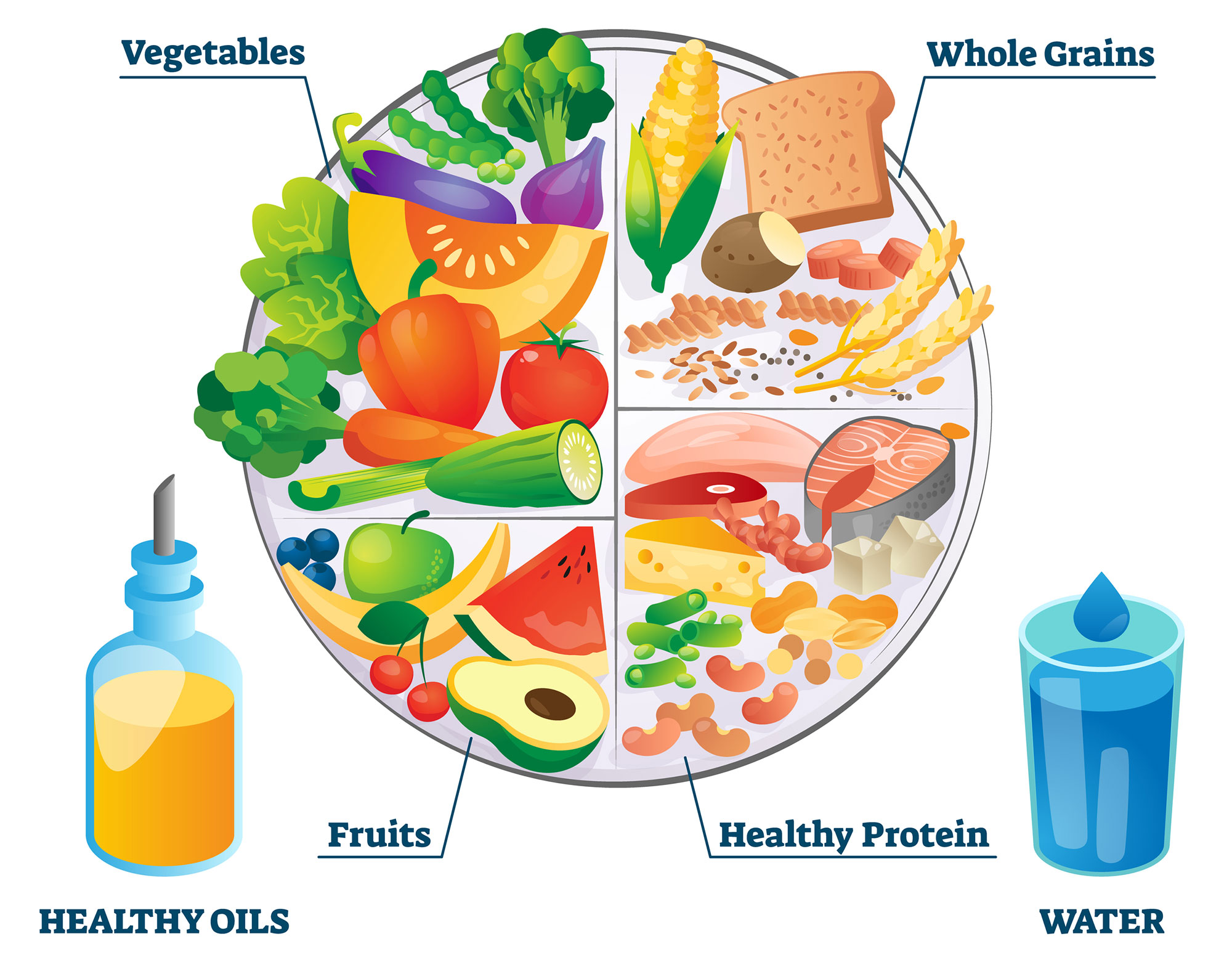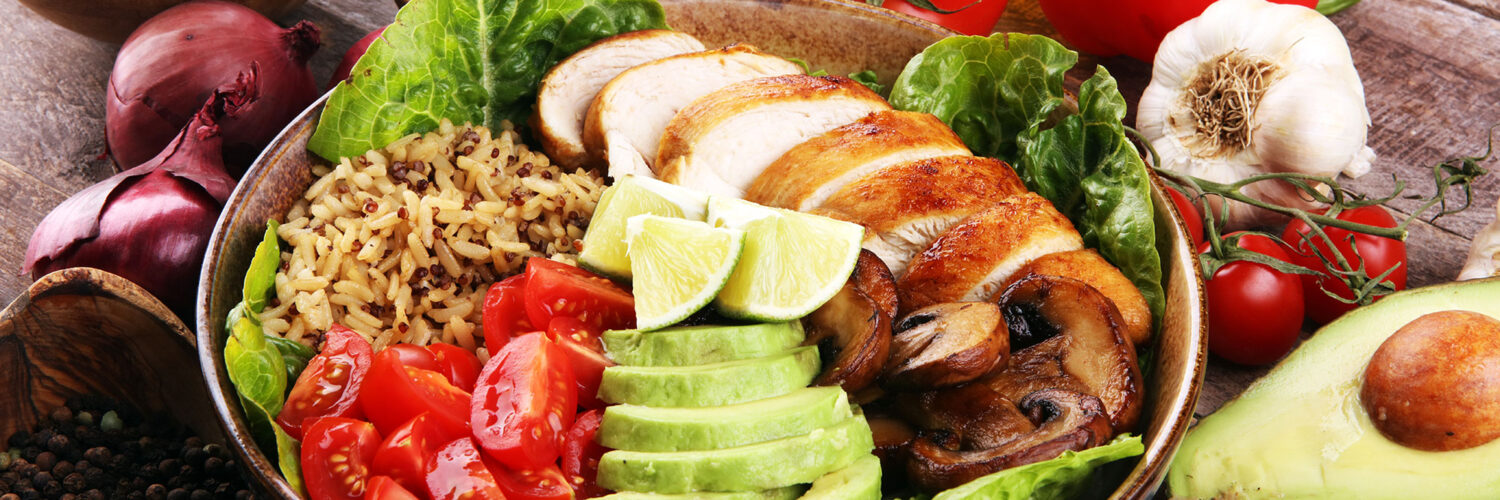Discover our nutritionist’s top ten tips for a well-balanced diet, and what a healthy plate looks like.
Tips for a well-balanced, healthy diet
Ensure your diet is high in plant-based foods to achieve a high intake of key nutrients and antioxidants. Aim for a minimum of five fruits and vegetables daily.
Reduce intake of saturated fats and trans fats found essentially in margarines, cakes, and biscuits.
Eliminate, as much as possible, all refined sugars.
Reduce exposure to pesticides and herbicides by eating organic foods where possible.
Drink 1.5 - 2 litres of water daily.
Be aware of portion sizes relevant to your body and activity levels.
Keep salt intake to no more than the government recommended 6 grams daily.
Identify and eliminate any food allergens or foods that don’t agree with you.
Reduce all drinks and foods containing sweeteners as they upset blood sugar balance and alter the gut microbiome.
Live to eat rather than eat to live! We eat not only to provide essential fuel and nutrients but to bring us all together; it is why food is involved in so many of our important celebrations.
What does a healthy plate look like?
Whilst vitamins and minerals are micronutrients, there are three key macronutrients:
Proteins
Fats
Carbohydrates
We need a balance of these macronutrients every day. But what does this balance look like?

As an easy meal guide, divide your plate into quarters and aim for:

One quarter of good quality protein: meat, fish, eggs, beans, legumes, nuts, and poultry. Be careful to limit processed red meat such as bacon and sausages to once or twice a week.

One quarter of whole grain carbohydrates: whole wheat, quinoa, oats, brown rice, buckwheat, or barley, essentially those that are unrefined.

Half of your plate should be focused on vegetables and/or fruit. It’s all about having loads of colour; the more colour on the plate, the more nutrients, and antioxidants you will eat. Fruit contains natural sugars so it’s always better to prioritise vegetables on the plate.



